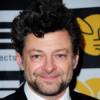Andy Serkis

Andy Serkis
Andrew Clement "Andy" Serkisis an English film actor, director and author. He is best known for his performance capture roles comprising motion capture acting, animation and voice work for such computer-generated characters as Gollum in The Lord of the Rings film trilogyand The Hobbit: An Unexpected Journey, the eponymous King Kong in the 2005 film, Caesar in Riseand Dawn of the Planet of the Apes, Captain Haddock / Sir Francis Haddock in Steven Spielberg's The Adventures of Tintinand Supreme Leader...
NationalityEnglish
ProfessionMovie Actor
Date of Birth20 April 1964
CityLondon, England
I love the whole kind of notion of transformation for me is (what) excites me about not only acting, but storytelling. I love, I love that notion of a slightly larger-than-life artistic truth, you know, magnifying real emotional truth (or) finding something about human condition (which), you wouldn't necessarily think you can learn from characters such as Kong or Gollum, but actually they are, you know, these huge amplifications of a human psyche and I suppose those kind of roles have always attracted me definitely.
Everybody thinks performance capture is about thrashing around and doing a lots of movement, but it's actually about being able to contain and think and be believed in a close-up, as much as anything else.
Basically we're puppeteers and if you're there and you're in the character, the puppet is going to look good. It's going to breath life and I think once they find out how to trust this system, you just forget about it and just perform, then it's just second nature, it just becomes easy.
That's what I think is the biggest challenge, is just being still and learning how to just be present in that stillness and not over do it, not over act.
When you start to do research into gorillas or any kind of apes, if you're going to play them, that's one of the biggest misconceptions. And when I did Kong, you're not doing gorilla movements, you're not doing ape movements, you're looking for a personality. It's like saying okay I'm going to do human movements.
Performance capture is a tool that young actors will need in the next 10, 20 years. It's on the increase, as you say. It's not going away.
What you can do with visual effects is enhance the look of the character, but the actual integrity of the emotional performance and the way the character's facial expressions work, that is what is going to be created on the day with other actors and the director.
I remember kind of doing early acting and thinking, 'God, they don't paint behind the sets.' It's a bit of a shame, really - 'Oh, what's on the other side of this wall? Oh, you can see the plywood.' I was really disappointed. I just thought that these things were real, from watching things as a kid.
When I was in theater I was forever trying to inhabit a space which puts yourself under the microscope as an actor and your personality and your take on life, but actually through another portal of a character.
Mountaineering has always been a huge hobby of mine.
I expect at some point I'll probably want to go back on stage and do some theater, because I've not done theater in 10 years.
I think there will always be a particular generation of actors who think that they're going to be replaced by robots. But certainly the emerging actors understand that that's part of the craft.
For film and games, there is now a fantastic method of actors portraying characters which don't necessarily look like themselves. And yet you've still got the heart and soul of the performance.
I have a great interest in Victorian musical & cabaret performances and Weimar artists so the references are there, to Cabaret and also All That Jazz and other films where, where there's a kind of (influential German playwright Bertolt) Brecht-ian approach, almost to the character standing outside of himself or, in this case, he's "self-séance-ing."